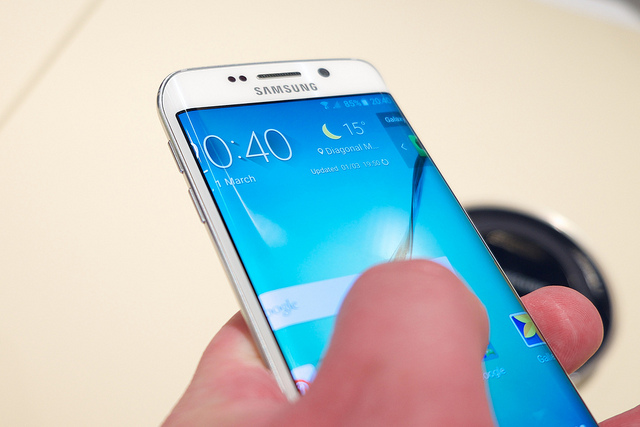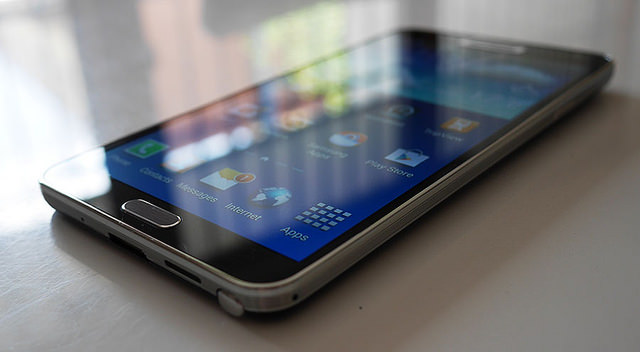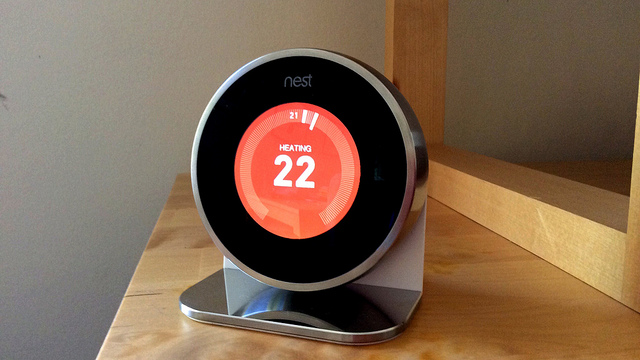Location based marketing has been a rapidly growing area for retailers and other businesses with a physical location.
One of the most exciting areas within the location based marketing umbrella right now has to do with beacons. Beacons are a low-cost, pinpointed location-based technology that uses low energy Bluetooth to communicate with beacon enabled mobile devices. Beacons offer a sizable step forward when it comes to a retailers ability to target an individual consumer at just the right moment. Brands have greater opportunity than ever before to extend their message past shelf and point-of-sale displays and deliver a personalized message to shoppers.
To utilize beacons you will need to integrate their use with a mobile app. The beacon simply triggers functions within your mobile applications. You will need to carefully plan how to integrate beacon use into your mobile app development and discuss the program with your iPhone app developer or Android app developer. Since beacons can be used to deliver personalized, relevant content at just the right moment, a solid beacon program can be a tremendous way to increase the utility and engagement with your mobile application.
 Make sure your beacon triggered activities and messaging are relevant and will improve the user experience and not seen as intrusive or irrelevant or users will disable them or worse, delete your app. This is why data collection is so important today, as messaging can be personalized in order to increase relevance. Take the personalized delivery of content and add in precise contextual location based information of a customer in a retail store and you will have a highly effective messaging program.
Make sure your beacon triggered activities and messaging are relevant and will improve the user experience and not seen as intrusive or irrelevant or users will disable them or worse, delete your app. This is why data collection is so important today, as messaging can be personalized in order to increase relevance. Take the personalized delivery of content and add in precise contextual location based information of a customer in a retail store and you will have a highly effective messaging program.
Are beacons effective?
In a study conducted last year by inMarket, they found that interactions with advertised products improved 19X for users who received messages from beacons. Additionally their research found that apps were used in-store 16.5X as much for users who received message from beacons and that those customers were 6.4X more likely to keep a businesses app on their smart phone. Clearly these users are more engaged and likely to remain so.
Photo: Kārlis Dambrāns (Flikr) http://bit.ly/1D0oGK0
Marketers in the past never had opportunities like they do now. With a mobile device, consumers have a regular connection to brands right in the palm of their hand.
With mobile devices shopping has been evolving and changing as users are leveraging the power of mobile devices to enhance their shopping experiences. In fact, Google found that 84% of smartphone owners use their devices while in physical stores.
 The shopping process has grown, in fact, consumers most likely started shopping on their mobile device before they ever entered your store. Due to this growth in the shopping process, brands can extend their marketing strategies. Brands can start engaging consumers in the shopping process before they arrive and continue to interact with users after they leave or even while they are at a competitor’s store.
The shopping process has grown, in fact, consumers most likely started shopping on their mobile device before they ever entered your store. Due to this growth in the shopping process, brands can extend their marketing strategies. Brands can start engaging consumers in the shopping process before they arrive and continue to interact with users after they leave or even while they are at a competitor’s store.
Key to this process working is data. Companies have access to data now like they never had in the past. Businesses can utilize insights from location based mobile data to help them understand the customer journey and improve the experience.
Location based mobile data is a marketer’s dream. But you can’t use it if you aren’t collecting it, make sure you discuss your intent with your mobile application developer. Your iPhone application developer or Android application developer can help you prepare for a data driven mobile shopping application.
Typically customers are happy to provide the data in order to improve shopping experiences, so make sure you start off by giving your users the opportunity to create a user profile. The data from the user profile can be used to help you segment your messaging and deliver it to users as applicable, rather than sending out one-size-fits-all style messaging.
Additionally, it is easier than ever to deliver your message on a localized basis, providing locations, pricing and deals for each store. It doesn’t matter to someone in Phoenix, AZ if you have deals in your CO locations, make sure you are delivering content relevant to your user’s location to increase interest in your messaging.
Location based mobile data can help you understand which brands or products a user is interested in when they visit your physical stores and allow you to deliver content based on the user’s specific interests. Keeping a user’s interest in a great part determined by relevance. The more relevant your messaging, the more interested users will be.
As you are gathering data plan ahead to use data as part of your planning process to better understanding the sales process and how you can improve user’s shopping experiences.
Photo: tyrande101 (Flikr) http://bit.ly/1DZZ5QO
By now you have probably heard of the Internet of Things many times.
But you may not yet understand what it is. Maybe the simplest way to think about it is realize houses and other buildings are going to become much smarter and more connected over the upcoming years. You may have already seen this with thermostats.
While many don’t understand the Internet of Things now they will soon as growth is predicted to be tremendous.
Business Insider predicts that connected home device shipments will increase at a compound annual rate of 67% over the next five years (this is faster than smartphones or tablets). This results in an astounding 1.8 billion units they are predicting to be shipped in 2019. They describe connected home devices as all smart appliances (such as washers or refrigerators) and energy related devices such as smart thermostats and smart lighting.
In terms of sales, connected-home device sales will account for over $61 billion in revenue this year, but that number will skyrocket at a 52% compound annual growth rate to $490 billion in the year 2019.
 There are great opportunities for forward thinking businesses.
There are great opportunities for forward thinking businesses.
But how do you seize your opportunity?
Start by evaluating the market to look for opportunities that overlap with your business capabilities. Many businesses will have new opportunities where they can extend their products and services in a meaningful way into their consumers homes. For instance, look at Amazon’s Dash Button that lets customers order Tide, Glad trash bags and more than 250 other brands with the touch of a finger.
Are their area of your business that overlap with the opportunities presented by the Internet of Things? Sometimes the answers aren’t always obvious, try to think out side the box and see if you can find a connection that isn’t necessarily the first and most obvious idea. Perhaps speak with an iPhone application developer or Android application developer to see if they have ideas of how to integrate external devices with mobile applications and your products. Application developers are are the front lines and understand the industry trends.
Once you identify areas of opportunity remember that it is all about the execution.
How do you make your idea the most user friendly? How do you make your user experience intuitive? Do you have the feature set and hardware that is right for your opportunity? Are you giving your consumers what they want? or will your idea fall flat because you failed to consider how your customers interact with your brand?
Having and idea is only part of the battle as execution is essential.
Photo: Scott Cawley (Flikr) http://bit.ly/1QXavNW